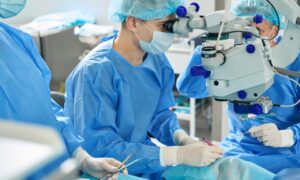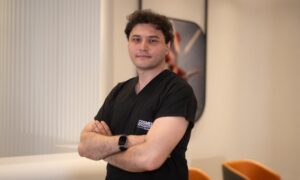Vascular surgeons have an important role in protecting the health of people with blood vessel and lymphatic system disorders. Vascular surgeons treat conditions like aortic aneurysms, aortic dissection, blood clots, and deep vein thrombosis. They treat vascular conditions in most of the body, except the brain and heart.
There are many exciting advances in the field of vascular surgery that are helping patients overcome these serious health problems and return to normal activities. Dr. Eric Fishman, a vascular surgeon from New York, shares some of the most advanced techniques that are being used by vascular surgeons today.
Endovascular Techniques
Today, there are only a few conditions that can only be treated by open surgery. These include thoracic outlet and entrapment systems. The remainder of vascular problems can generally be treated using endovascular surgery.
Endovascular surgery involves making a small incision to allow the surgical tools to enter the body. This allows the surgeon to access the blood vessels. The surgeon inserts what is called an endovascular graft, a fabric tube device that includes stainless steel stents. This device is inserted into a catheter.
Other tools can also be inserted into the blood vessel through the catheter. These include balloons that expand the blood vessel and devices that can break up blood clots.
New Techniques in Endovascular Surgery
These fascinating advances will help vascular surgeons treat their patients and produce better outcomes. They will also save vascular surgeons valuable time, a significant advantage because there is a shortage of these medical professionals in the field.
Placental Allografts for Diabetic Foot Ulcers
Diabetic foot ulcers are particularly severe, and they appear in about 15 percent of patients with diabetes. The current method of treatment is only partly effective, and infections resulting in hospitalization are common.
One new technique involves the donation of placental tissue from mothers who have just given birth. The tissue is cleaned and used to produce dehydrated grafts that can be stored at room temperature.
The graft is placed over the ulcer to improve healing. Studies have shown that the technique is effective and can help with wound closure.
Blood Clot Treatment With Nanodroplets and Ultrasound
One of the most exciting new techniques being introduced into the world of vascular surgery is the use of nanodroplets and ultrasound to clear blood clots. An ultrasound catheter tipped with nanodroplets is inserted into the artery or vein.
The nanodroplets are special because they are made of spheres of low-boiling point liquid perfluorocarbons. These perfluorocarbons or PFCs are released from the spheres by showers of ultrasound and break up the clot.
Using the nanodroplets could decrease the size of the clot by up to 40 percent. This is much more effective than other methods of breaking up clots, which reduce clots by about 17 percent.
CoolSeal Vessel Sealing Platform
Bolder Surgical recently released a device called the CoolSeal Trinity. This device is available in 5 millimeter and 3 millimeter sizes. It is a laparoscopic sealer that can divide, dissect, and seal blood vessels using RF technology. The heat produced by the device only spreads by 1 millimeter, meaning that there is very little chance of damage to the surrounding tissue.
New Microsurgical Systems
A new microsurgical system called Symani has been cleared for use in Europe. The system allows for a 7 to 20X scaling of surgeons’ hand movements, removing tremors to help provide more accurate surgical procedures. The system also includes a heads-up 3D visualization system so that the surgeon can have a better view of the area being worked on.
Electronic Blood Vessels
Chinese and Swiss researchers have developed artificial blood vessels that can replace problem blood vessels in the body. These vessels are made with a metal-polymer conductive membrane. Electrical currents are then passed through the vessel. It is thought that the electricity stimulates regrowth of cells. These vessels can also be used in gene therapy and other types of procedures.
Artificial Intelligence Technologies
Artificial intelligence or AI has significant potential to be used by surgeons and other health care professionals. AI may be able to be used to predict which patients are most likely to need another surgery after an aneurysm repair. They could assess normal and abnormal structures on an ultrasound or CT scan. AI could also analyze patient risk factors for limb loss from peripheral artery disorder or PAD.
The potential of AI is limitless, and medical professionals are keeping a close eye on these developments.
Helping Patients Achieve Better Outcomes
Vascular surgery is poised to help many patients who previously would have had disabling or even fatal disorders live longer, healthier lives. Dr. Eric Fishman believes that these technological advances will make his job easier and help his colleagues treat dangerous conditions of the blood vessels and lymphatic system.
Studying the newest advances in medicine allows surgeons to make a difference in their patients’ lives. Dr. Fishman and his colleagues stay on top of these advances in order to provide the best quality treatment to their patients.



































